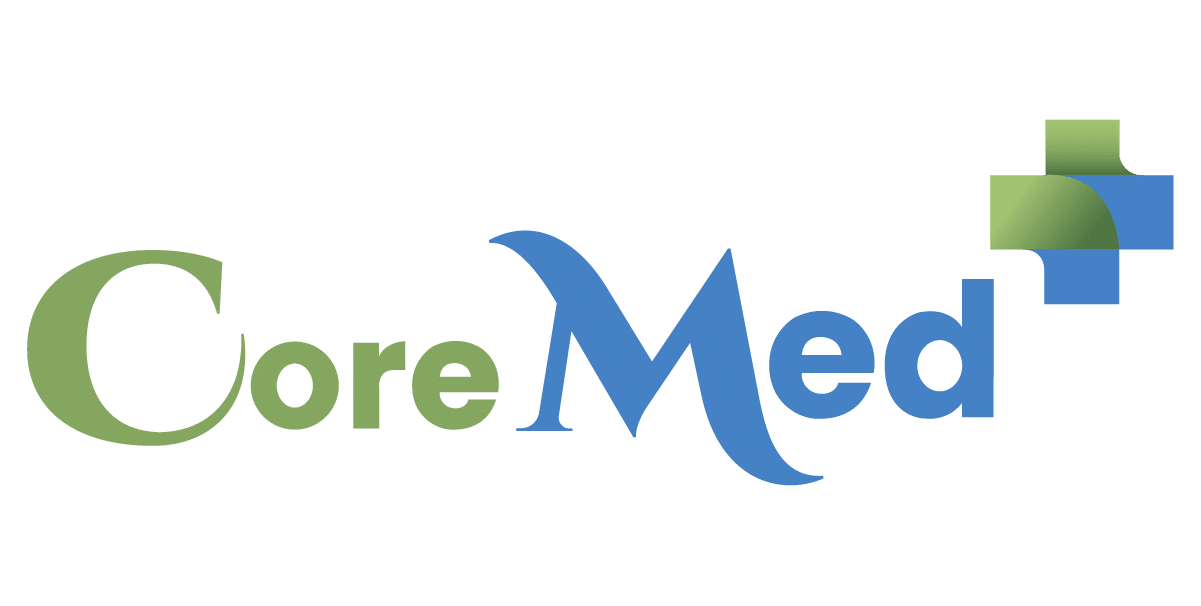- Home
- Our Providers
- Our Services
- Abdominal Aortic Aneurysm Screening
- Alzheimer’s Disease
- Antibiotics Treatment
- Arthritis
- Asthma and Allergies
- Blood Work
- Breast Cancer Screening
- Cancer Screenings
- Cervical Cancer Screening
- CHF
- Chronic Diseases Management
- Colon Cancer Screening
- Physical Exam and Preventative Care
- COPD
- Covid Testing
- Dementia
- Depression and Anxiety
- Diabetes Mellitus Type 1 & 2
- Ear Cleaning
- ECG
- Fibromyalgia
- Flu Tests
- GERD
- Heart Disease
- Hepatitis Screening
- High Blood Pressure
- High Cholesterol
- HIV Screen Tests
- Hormone Therapy
- Iron Injection
- Joint Injection
- Kidney Disease
- Lung Cancer Screening
- Medical Wellness Visits
- Men’s Health
- Nutrition Consultation
- Obesity
- Osteoporosis
- Peripheral Neuropathy
- Peripheral Vascular Disease
- Pre and Post Surgical Evaluations
- Prostate Cancer Screening
- Pulmonary Disease
- Pulmonary Function Test
- Seizure
- Sexual Transmitted Diseases
- Sick Visits
- Skin Biopsy
- Sleep Apnea
- Smoking Cessation and Reduction
- Stroke
- Testosterone Injection
- Thyroid Dysfunction
- Ultrasound
- Urine Analysis
- Vaccinations
- Vascular Studies
- Vitamin B12 Replacement
- Weight Loss
- Wound Care and Suture Removal
- Telemedicine
- Join Our Team
- Patients
Osteoporosis
CoreMed Plus is a comprehensive healthcare provider that offers a wide range of services to help manage chronic conditions such as osteoporosis. Osteoporosis is a medical condition characterized by a loss of bone density, which can increase the risk of fractures and falls. CoreMed Plus provides a multidisciplinary approach to treating osteoporosis, which may include medication, lifestyle modifications, and other interventions to help reduce the risk of fractures and improve overall bone health.
At CoreMed Plus, our healthcare providers work closely with each patient to develop a personalized treatment plan for managing osteoporosis. This may include medication such as bisphosphonates or RANK ligand inhibitors to help slow bone loss and increase bone density. Our providers may also recommend lifestyle modifications to help reduce the risk of falls and fractures, such as regular exercise, calcium and vitamin D supplementation, fall prevention strategies, and smoking cessation or moderation of alcohol intake.
In addition to medication and lifestyle modifications, CoreMed Plus may also offer other interventions to manage osteoporosis. For example, our healthcare providers may recommend physical therapy or other forms of rehabilitation to improve balance and reduce the risk of falls. We may also offer education and support for managing osteoporosis, including information on diet and nutrition, exercise, and strategies for reducing the risk of fractures.
CoreMed Plus offers a comprehensive approach to managing osteoporosis, focusing on personalized care and a multidisciplinary approach to treatment. Our goal is to help each patient manage their condition effectively and improve their overall quality of life while reducing the risk of falls and fractures associated with osteoporosis.

What is Osteoporosis
Osteoporosis is a chronic medical condition characterized by the progressive weakening and thinning of bone tissue, which increases susceptibility to fractures or breaks. This loss of bone mass occurs when the body loses too much bone, makes too little bone, or both. Osteoporosis is often asymptomatic until a fracture occurs, most commonly in the hip, spine, or wrist.
Risk factors for osteoporosis include age, gender (women are at higher risk), genetics, and lifestyle factors such as a sedentary lifestyle, smoking, excessive alcohol consumption, and a diet lacking in calcium and vitamin D. Diagnosis typically involves a bone density test, such as a dual-energy X-ray absorptiometry (DXA) scan. Treatment typically includes medications to increase bone density and lifestyle modifications to reduce the risk of falls and fractures.
Why Does Osteoporosis Occur
Osteoporosis occurs due to an imbalance between the formation and breakdown of bone tissue. Typically, bone tissue is constantly being broken down and rebuilt in a process called bone remodeling. During this process, osteoclasts break down old bone, and osteoblasts form new bone.
In osteoporosis, the balance between bone breakdown and bone formation is disrupted, resulting in a net loss of bone tissue. This can occur for a variety of reasons, including:
Aging
Aging is a major risk factor for osteoporosis because as people age, the bone breakdown rate exceeds the bone formation rate. This is due to changes in bone remodeling, the process by which bone tissue is constantly broken down and rebuilt. As people age, the activity of bone cells called osteoblasts, which are responsible for building new bone, decreases. In contrast, the activity of bone cells called osteoclasts, which break down bone, increases. This imbalance leads to a gradual loss of bone mass over time, which can eventually result in osteoporosis.
Hormonal Changes
Hormonal changes, such as those that occur during menopause, can also contribute to the development of osteoporosis. Estrogen plays a key role in maintaining bone density by inhibiting the activity of osteoclasts, which break down bone tissue. After menopause, estrogen levels decrease, leading to an increase in bone breakdown and bone formation. This can result in rapid bone density loss, eventually leading to osteoporosis.
Nutritional Deficiencies
Nutritional deficiencies, particularly a lack of calcium and vitamin D, can also contribute to the development of osteoporosis. Calcium and vitamin D are essential for building and maintaining healthy bones. Without adequate levels of these nutrients, the body may be unable to form new bone tissue, leading to a decrease in bone density and an increased risk of fractures.
Certain Medical Conditions
Certain medical conditions can also increase the risk of osteoporosis. For example, hyperthyroidism, a condition in which the thyroid gland produces too much thyroid hormone, can increase bone breakdown and decrease bone formation. Similarly, inflammatory bowel diseases, such as Crohn’s disease or ulcerative colitis, can interfere with absorbing nutrients necessary for healthy bones.
Certain Medications
Certain medications can increase the risk of osteoporosis by reducing bone formation. Glucocorticoids, such as prednisone or cortisone, are commonly used to treat asthma, rheumatoid arthritis, and lupus. However, these medications can interfere with bone remodeling, leading to decreased bone density and an increased risk of fractures.
Osteoporosis can occur due to various factors, including aging, hormonal changes, nutritional deficiencies, medical conditions, and medications. Understanding and taking steps to manage these risk factors can help reduce the risk of osteoporosis and improve bone health.

Treatment for Osteoporosis
Treatment for osteoporosis typically involves a combination of medication and lifestyle modifications. The goal of treatment is to slow or stop bone loss, improve bone density, and reduce the risk of fractures.
Some of the medications used to treat osteoporosis include:
Bisphosphonates
Bisphosphonates are medications commonly used to treat osteoporosis. They work by slowing down the activity of osteoclasts, the cells responsible for breaking down bone tissue. This helps to reduce the rate of bone breakdown and can lead to an increase in bone density over time. Bisphosphonates can be taken orally or administered through an injection or intravenous infusion.
Hormone Therapy
Hormone therapy, also known as hormone replacement therapy, can be used to treat osteoporosis in postmenopausal women. Estrogen replacement therapy helps to reduce bone loss and increase bone density by inhibiting the activity of osteoclasts. Testosterone replacement therapy can also be used in men with low testosterone levels to improve bone density. However, hormone therapy is associated with certain risks, including an increased risk of breast cancer, stroke, and blood clots, so it is not recommended for everyone.
Rank Ligand Inhibitors
RANK ligand inhibitors are a newer class of medications used to treat osteoporosis. Denosumab is one example of a RANK ligand inhibitor. This medication works by inhibiting the activity of a protein called RANK ligand, which is involved in the formation and activity of osteoclasts. By reducing the activity of osteoclasts, denosumab can help reduce bone loss and increase bone density over time.
Parathyroid Hormone Analogs
Parathyroid hormone analogs are another class of medications used to treat osteoporosis. One example is teriparatide. These medications work by stimulating the activity of osteoblasts, the cells responsible for building new bone tissue. This helps to increase bone formation and can lead to increased bone density over time. Parathyroid hormone analogs are administered as a daily injection.
These medications can effectively treat osteoporosis by slowing bone loss and increasing bone density. However, they each have unique mechanisms of action and associated risks and benefits, so it is important to work closely with a healthcare provider to determine which medication is best for each patient. In addition to medication, lifestyle modifications such as regular exercise and a healthy diet can also help improve bone health and reduce the risk of fractures.
In addition to medication, lifestyle modifications can help manage osteoporosis. These may include:
Regular Exercise
Regular exercise is an essential component of managing osteoporosis. Weight-bearing exercises, such as walking or jogging, help to stimulate bone formation and increase bone density. Resistance exercises, such as lifting weights or using resistance bands, can help to build muscle and improve balance, reducing the risk of falls and fractures. Exercise can also help improve overall physical fitness, further reducing the risk of falls and fractures.
Supplements
Calcium and vitamin D supplements are also crucial for maintaining bone health. Calcium is a key component of bone tissue; vitamin D helps the body absorb calcium from food. Without adequate levels of these nutrients, the body may be unable to form new bone tissue or maintain existing bone density. Calcium and vitamin D supplements can help to ensure that the body has enough of these nutrients to support healthy bones.
Fall Prevention
Fall prevention is another important aspect of managing osteoporosis. Taking steps to reduce the risk of falls, such as removing hazards in the home, installing handrails in bathrooms and stairways, and wearing appropriate footwear, can help to prevent fractures. Other strategies for fall prevention may include physical therapy to improve balance and strength and using mobility aids such as canes or walkers as needed.
Quit Smoking
Smoking is a known risk factor for osteoporosis, as it can reduce bone density and increase the risk of fractures. Quitting smoking can help to improve bone health and reduce the risk of fractures. It can also improve overall health and reduce the risk of other smoking-related diseases.
Moderating Alcohol Consumption
Moderating alcohol consumption is also important for maintaining bone health. Excessive alcohol consumption can increase the risk of osteoporosis by reducing bone formation and increasing the risk of falls and fractures. Limiting alcohol intake to moderate levels, defined as up to one drink per day for women and up to two drinks per day for men, can help to improve bone health.
A combination of medication and lifestyle modifications is often used to manage osteoporosis. Lifestyle modifications such as regular exercise, taking calcium and vitamin D supplements, fall prevention strategies, quitting smoking, and moderating alcohol consumption can all help to improve bone health and reduce the risk of fractures. Working closely with a healthcare provider can help to determine the best approach to managing osteoporosis based on individual needs and risk factors.

Call CoreMed Plus Today!
CoreMed Plus is a dedicated healthcare provider offering a comprehensive approach to osteoporosis management. Our team of healthcare professionals is committed to providing personalized care and multidisciplinary treatment to help each patient manage their condition effectively and improve their overall quality of life.
At CoreMed Plus, we understand the challenges of living with osteoporosis and are passionate about helping our patients reduce their risk of fractures and falls. We offer various services, including medication, lifestyle modifications, rehabilitation, and education, to help manage osteoporosis and improve bone health.
Our providers work closely with each patient to develop a personalized treatment plan that considers their individual needs and risk factors. We prioritize patient education and support, offering resources and guidance to help our patients manage their condition and reduce the impact of osteoporosis on their daily lives.
We are enthusiastic about the work we do at CoreMed Plus and the positive impact we have on the lives of our patients with osteoporosis. We are committed to providing compassionate care and innovative treatments to help patients achieve optimal health and well-being. If you or a loved one are living with osteoporosis, we encourage you to contact CoreMed Plus to learn more about our services and how we can help.
Contact Information
If you’re ready to take charge of your health and embark on a journey toward a healthier, happier life, we invite you to contact us today. Our compassionate and knowledgeable staff is excited to take your call and help you on your health journey. We will work closely with you to develop a customized treatment plan that is right for you and provide the support and care you need every step of the way.
Don’t let health concerns hold you back – contact CoreMed Plus today and let us help you achieve optimal health and wellness. We look forward to hearing from you and helping you achieve a healthier, happier life.
- Email: [email protected]
- Phone: +1 248-666-6005




